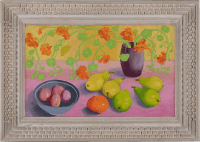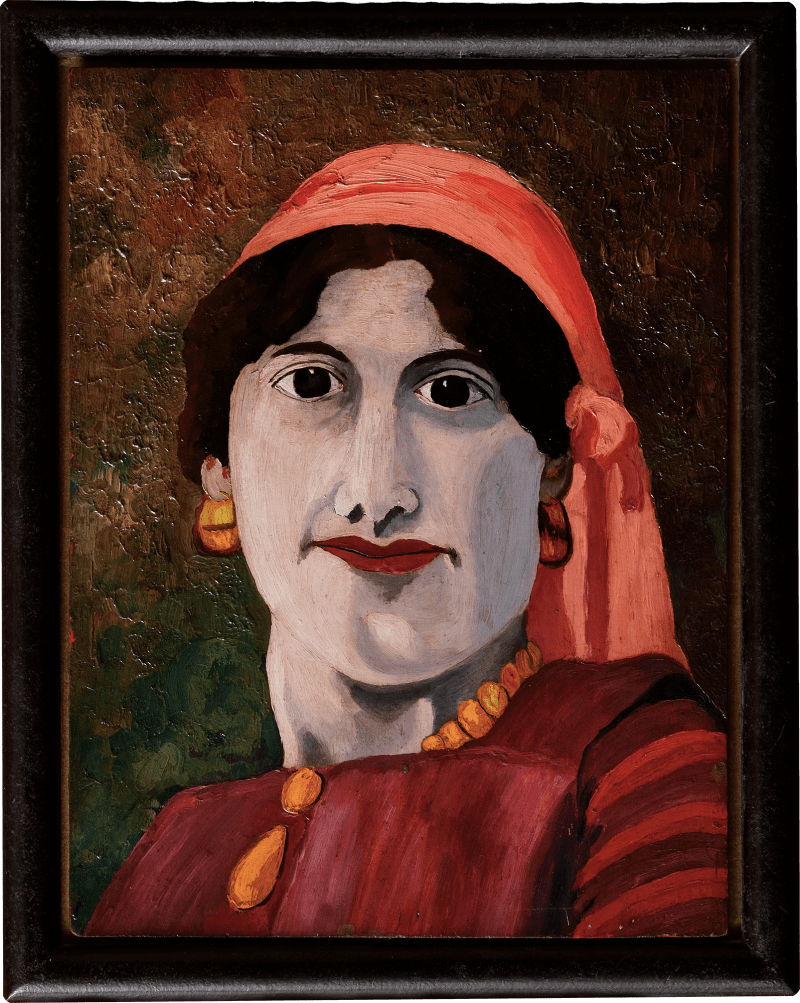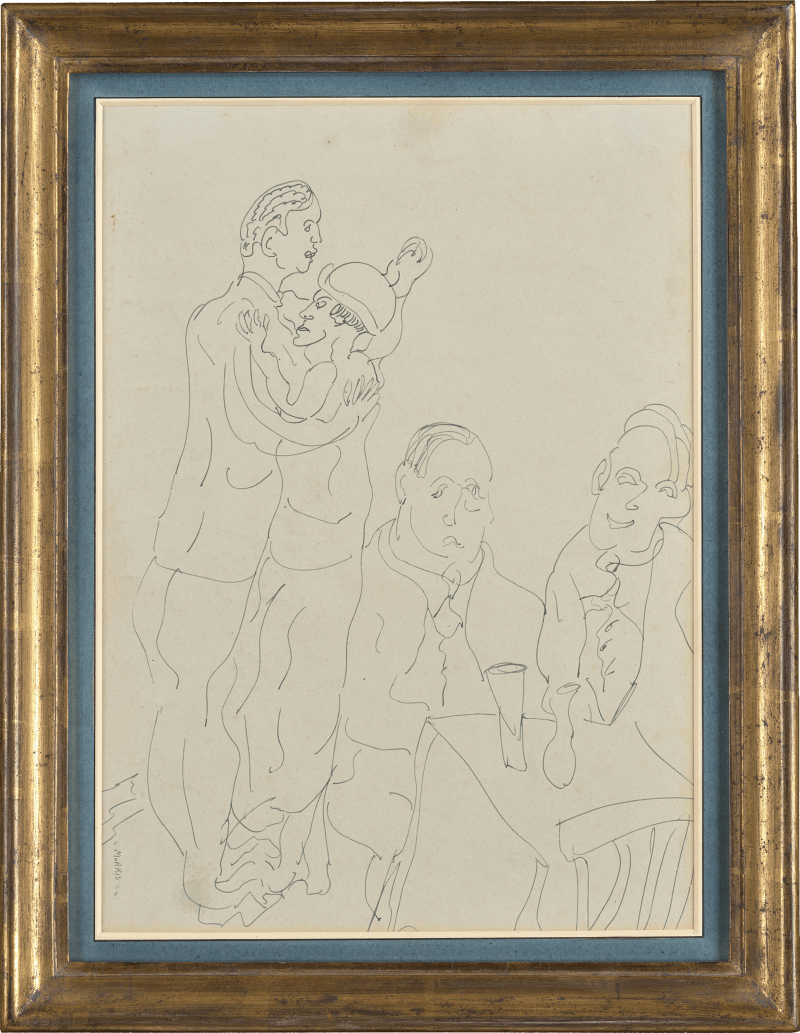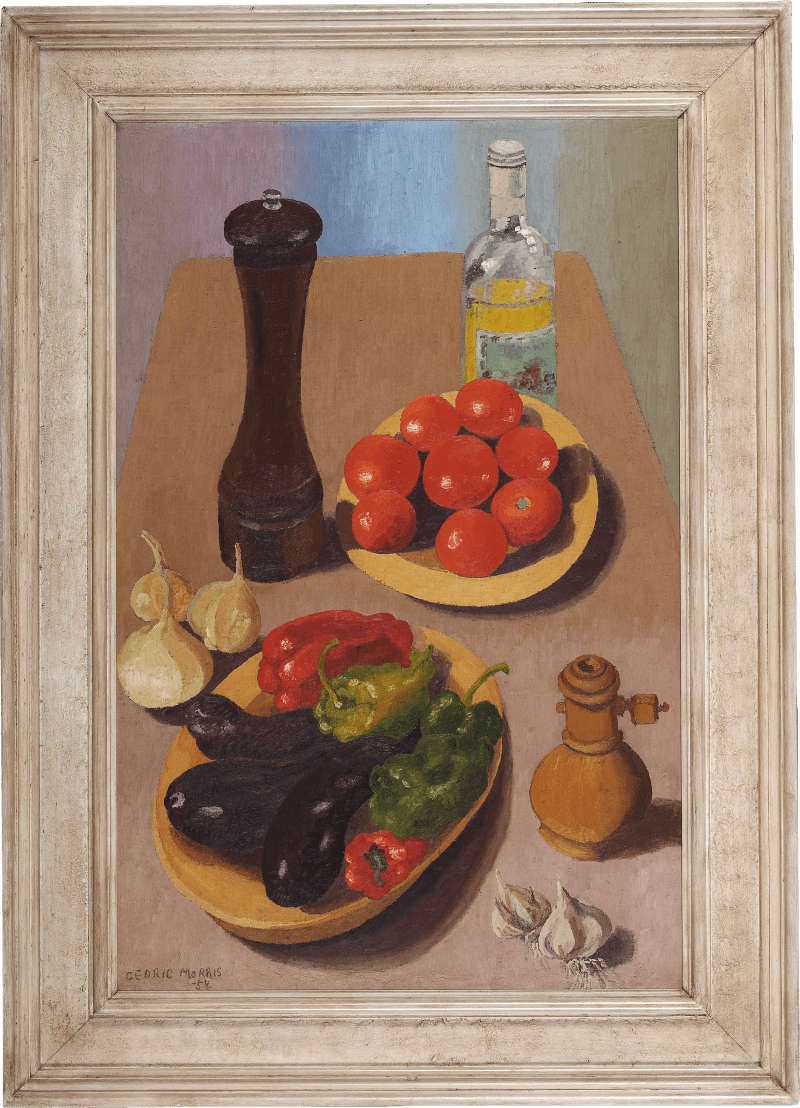This vibrant still life depicts a vase of winding Nasturtiums (tropaeolum) stretching over a table, scattered with pears, a bowl of plums, and a tangerine. Painted in 1952, this painting once hung in the dining room at Benton End, home to Cedric Morris and his partner Arthur Lett-Haines (known as Lett).
The students who attended the East Anglian School of Painting and Drawing at Benton End heralded its progressive way of life where visitors ‘could garden and work and talk, and where students of all ages could work alongside them.’[1] This lifestyle was sustained by Lett, whose famously delicious dinners are remembered by all who visited the house. Taking pride of place in the dining room, where it hung until 1970, this painting was privy to all manner of meals from intimate breakfasts to raucous dinner parties.
The present work is compositionally unconventional for Morris and reflects a period of artistic experimentation that lasted throughout the wartime years and into...
This vibrant still life depicts a vase of winding Nasturtiums (tropaeolum) stretching over a table, scattered with pears, a bowl of plums, and a tangerine. Painted in 1952, this painting once hung in the dining room at Benton End, home to Cedric Morris and his partner Arthur Lett-Haines (known as Lett).
The students who attended the East Anglian School of Painting and Drawing at Benton End heralded its progressive way of life where visitors ‘could garden and work and talk, and where students of all ages could work alongside them.’[1] This lifestyle was sustained by Lett, whose famously delicious dinners are remembered by all who visited the house. Taking pride of place in the dining room, where it hung until 1970, this painting was privy to all manner of meals from intimate breakfasts to raucous dinner parties.
The present work is compositionally unconventional for Morris and reflects a period of artistic experimentation that lasted throughout the wartime years and into the early 1950s. His earlier still-life works painted in the 1930s were generally shown against a neutral backdrop, but from around 1940 onwards Morris would often incorporate interior settings into his compositions. The most striking example of this is September Diagram, (1940s, Philip Mould & Co.). In the present work, a ledge – possibly indicative of a table pushed against a wall – provides a simple setting for a selection of fruit and meandering flowers. The strength of the portrayal is achieved through a combination of intense colouring and an intimate understanding of natural form which captures the very presence of the fruit and plants, as opposed to merely recording their basic shape. Morris’s aim was not to simply represent something in front of him, but rather to transcend reality by reducing unnecessary elements and focusing on the relation of forms within a composition. Consequently, his most accomplished still-life works bestow an ethereal character on his subjects whilst giving them an almost tangible presence within the frame. In this work, each bloom projects forwards in vibrant bursts in a colourful celebration of his greatest muse.
[1] Neve, C. ‘The Outside: Cedric Morris as Painter and Gardener’, Country Life, vol. 175, 26 April 1984, pp.1167.











